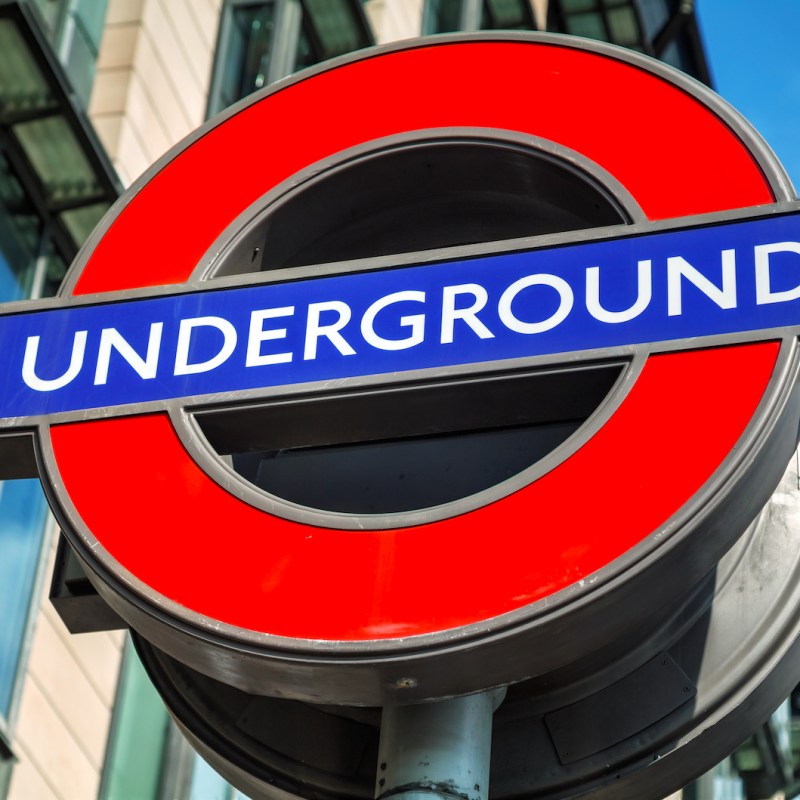
London’s transport system is pretty amazing. If you live outside of London, as I do, and have to deal with unreliable buses and tram tracks that don’t travel very far, the London Underground seems like a travel utopia. But it can be confusing. If you’re using the Tube for the first time, or even if you don’t use it very often, the maps, payment systems, and the sheer volume of people using it can be intimidating.
Videos by TravelAwaits
Just a few handy hints and tips can make all the difference and can allow you to relax and enjoy the experience of traveling the city by Tube. As one of the world’s oldest transit systems, there’s a lot of history in these stations and platforms, and it’s worth riding the tube just for the experience alone. But the Underground also takes you anywhere you want to go in London, and it takes you there fast. So to be sure your journey goes smoothly, here are some key tips for navigating the London Tube.

(Photo Credit: Thinglass / Shutterstock.com)
1. Familiarize Yourself With The Underground Map
When you get to your nearest tube station, it might all be a bit overwhelming. A lot of people use the Tube and most of them use it regularly, so they’re rushing through knowing exactly where they are going. You, on the other hand, might be standing around looking lost if you haven’t familiarized yourself with a map of the lines and stations before you set off. It’s easy to get hold of one, you can download a map here.
When you first look at the Tube map, it’s going to look like a mess of colored lines, but these distinctively colored lines are actually your best friend. Once you know which line you need to use, you’ll have a much easier time navigating the Underground. Just find your station, and where you want to travel to, and follow the colored line. Sometimes, you’ll see there is more than one line that can take you to your destination, giving you a choice of which one to ride.

(Photo Credit: nito / Shutterstock.com)
2. Know How To Pay
Buying an Oyster Card, which costs £5, has been the most preferred way of paying for travel around London for some time now. Once you’ve bought your card you can keep topping it up with travel money at the machines in the stations, and then you just tap it at the barriers and breeze through.
You can also use your Oyster Card on London buses and the TFL overground trains. In fact, you can use your Oyster card on just about any travel within London, including the river bus. You can buy paper tickets at the machines in the stations, but tapping an Oyster Card is so much faster and easier, and more cost-effective as paper tickets you buy on the day will be charged at a higher rate.
You can also use a contactless bank card if you have one, and you’ll notice most Londoners do this now. There was a time when everyone had an Oyster Card, but Londoners soon realized they could simply tap their bank card, and away they’d go — no need to keep topping it up or worry about if there’s enough on there to get you through the barriers.
Try to have your card or ticket ready before you get to the barriers, as there will be a lot of people going through and people get impatient if you hold them up. Also, remember, you have to tap your card or ticket on the way out of the station at your destination too.

(Photo Credit: Kevin Cole 44 / Shutterstock.com)
3. Finding Your Way Around The Station
Once you’re through the barriers you’ll find yourself in a very busy Tube station. Remember, this is the most popular form of travel in London, and many many people use it all day every day. The size of your station depends on which one you are using, but whichever station it is, finding your way around will be pretty much the same. You should know which line you need, so just look for the signs pointing you to the right line.
You’ll notice the same color is used that you saw on your map. If you didn’t download a map first, you’ll find them on the wall in the station — but you’ll most likely also find a lot of people crowded around them trying to view them, which is another reason why it’s better to download a map before you set off.
I’ve been in the Underground station at times when there have been so many people trying to view the map on the wall that it’s impossible to get a look at it. Most lines have a Northbound and a Southbound route, so make sure you know which direction you need to travel in. If you’re not sure which one of these you need or can’t find your platform, there are always plenty of friendly staff around to help you, or a member of the public will point you in the right direction.
You might feel like everyone is in a terrible hurry and some people are brusque in the Underground, but most Londoners are very friendly and will stop to help you.

4. Using The Escalators
Once you’re heading for your station you’ll either use a flight of stairs to get down, or more commonly, an escalator. Some of these escalators are very long and seem to travel very deep down underground. Angel Underground Station, on Islington Road, has the longest escalator in the Underground at 60 meters deep. When you first stand on the escalator it looks a very long way down, so be aware that if you suffer from vertigo, you might find this one a challenge. It takes one minute and 20 seconds till you get to the bottom.
Stand To The Right
When you get onto the escalator, always stand to the right. If you’re not in any rush and/or you have luggage with you, stand to the right and let anyone who is in a hurry run up on the left-hand side. If you have luggage, place it on the step in front of you and stand behind it, but always to the right. This is an important Tube rule that you only know if you’ve traveled by Tube before or you’ve been told.
Sometimes there are staff members at the bottom of the escalators shouting out to you to stand to the right, and if you do stand to the left or place your luggage beside you on the left, you’re going to find out pretty quickly that you’ve made a mistake. Londoners are generally a friendly bunch, but if you dare to stand to the left on the escalator those locals in a hurry will shout at you and even shove you out of their way! Of course, if you’re in a hurry and don’t have luggage you can run up or down on the left.

(Photo Credit: Chaz Bharj / Shutterstock.com)
5. Boarding The Tube
When you get to your platform, stand well behind the yellow line painted on the floor. When your tube train arrives, wait for the people getting off to leave before you try to get on. There are usually a lot of people disembarking at any given platform, so stand back, even if other passengers are pushing their way on.
Plenty of passengers don’t have any patience and will shove their way onto the carriage before everyone has gotten off. This is dangerous, as there is a gap between the platform and the train, and it’s also just rude! Don’t be surprised if there are no available seats when you’ve got onto the train. The poles are for holding onto if you stand, and on busy lines, it’s likely you will have to stand, but you’re not supposed to lean on them (although people do).
On the inside of the carriage, there is a map of your line above the windows. This means you can easily follow the progress of your journey and work out how far away you are from your stop. The voice announcements on board will tell you when you’re approaching your stop so there’s no need to worry about missing it.
London Tube Pro Tips
- Don’t panic. Remember, the Tube train runs frequently and it is reliable. There’s no need to rush for the train or push your way on. If you miss it or can’t get on because it’s full, another one is coming 5 minutes behind it.
- Even if you get on the wrong train, it’s not really that big a deal, as all you have to do is get off at the next stop and find your way to the right train.
- You can always just cross over to the other side and get the next train back to the stop you started at.
- If you’re traveling for leisure and not commuting, this is an adventure, so take your time and have fun. And if you get a little lost, who knows, maybe you’ll discover something amazing along the way.
